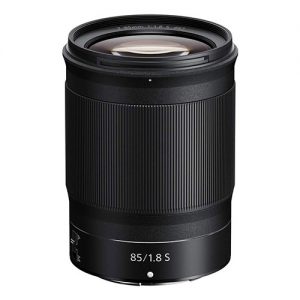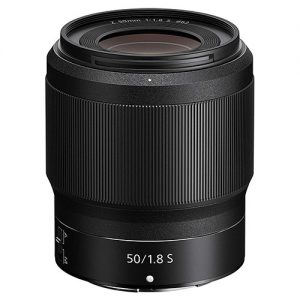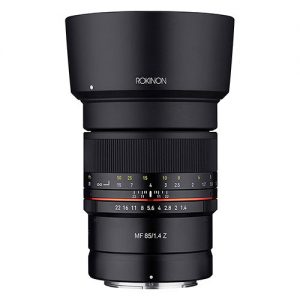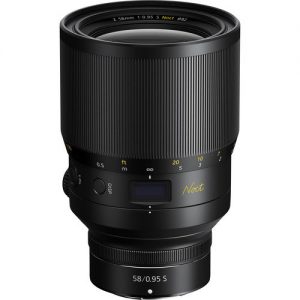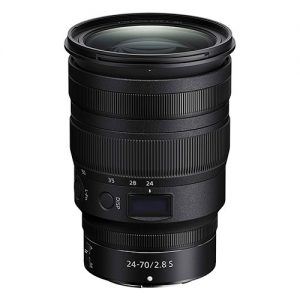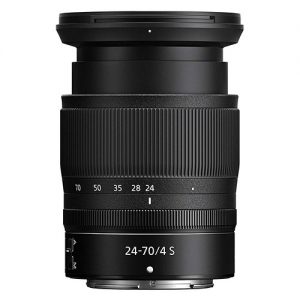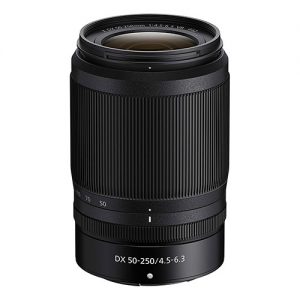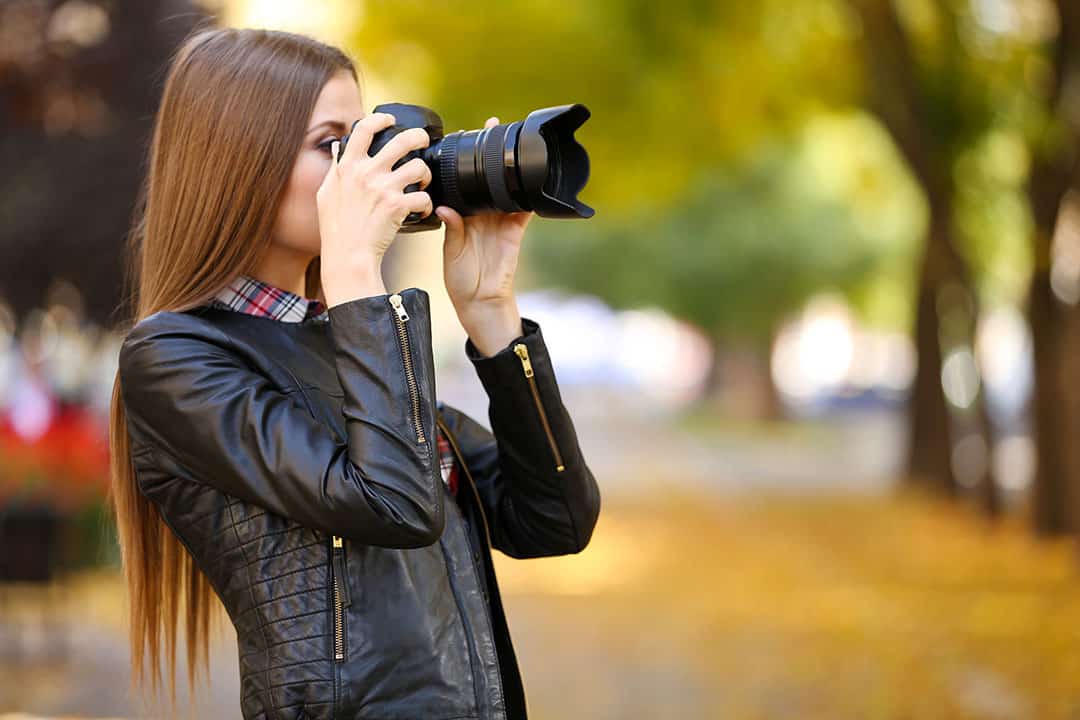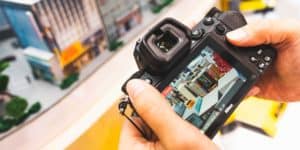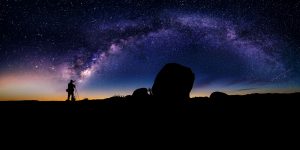Nikon was initially slow to join the Mirrorless gold-rush; essentially leaving Sony to corner the market for pro-specced full frame Mirrorless cameras.
But with the arrival of the Z6 and Z7 in 2018, Nikon fully committed itself to Mirrorless innovation.
And while still somewhat limited in range, the brand’s excellent line of Z-mount lenses continues to expanded fairly rapidly.
Meaning that there are now solid options available for shooting virtually any genre of photography with the Z-series bodies.
In this article we specifically look at the those Nikon Z-mount lenses that are most appropriate for portraiture; whether they are Nikon’s own lenses or third-party offerings.
We start off with a rundown of the best Nikkor Z portrait lenses currently (and soon to be) available, before diving deeper into considering what to look for in a portrait lens more generally.
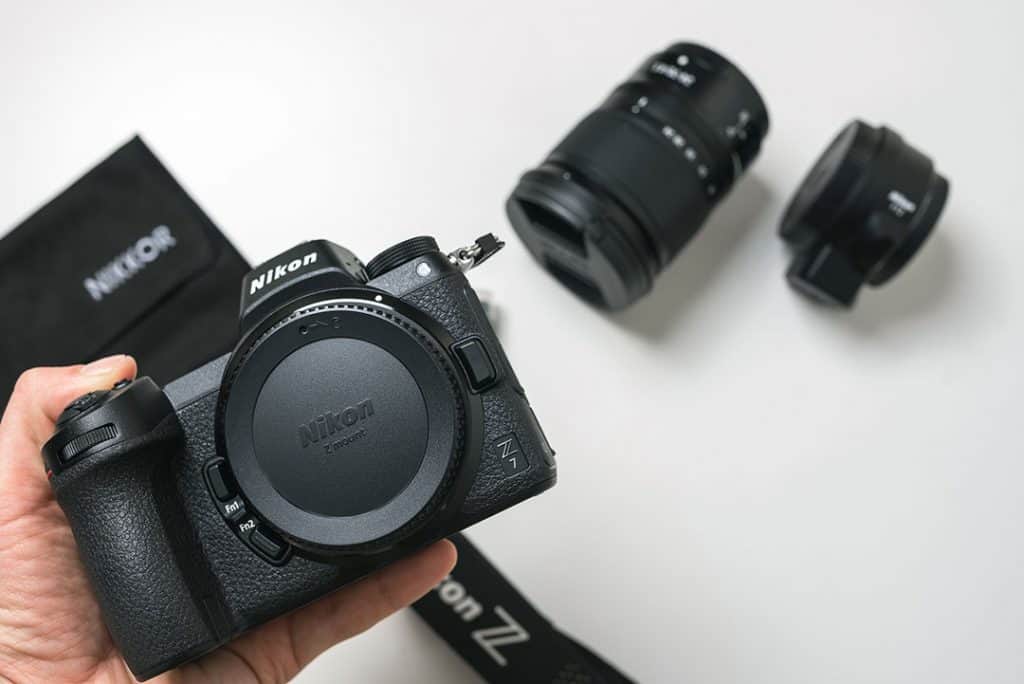
It’s rare that an item of photographic equipment delivers on all fronts, without reservation.
But this is definitely one of those cases. The Nikkor Z 85mm f/1.8 S is simply a fantastic piece of glass that does everything you could hope for in a portrait lens. And does it very well.
Build quality is very sturdy; images are sharp right across the frame; there’s almost no color fringing, flare, or ghosting; and the barrel is weather sealed.
What’s more, autofocus works brilliantly – whether used in single-point mode or with eye-detection – and is both fast and silent.
In short, from whichever perspective you look at it, this is simply a great all-round lens.
The fact that it also happens to come at a very convenient focal length for portraiture on a full-frame camera only makes us happier still.
Pros
- Edge-to-edge sharpness
- No noticeable color aberrations
- Fast and accurate autofocus
- Weather sealed
- Good bokeh
Cons
- There are no cons whatsoever with this lens; hence why it takes the top spot!
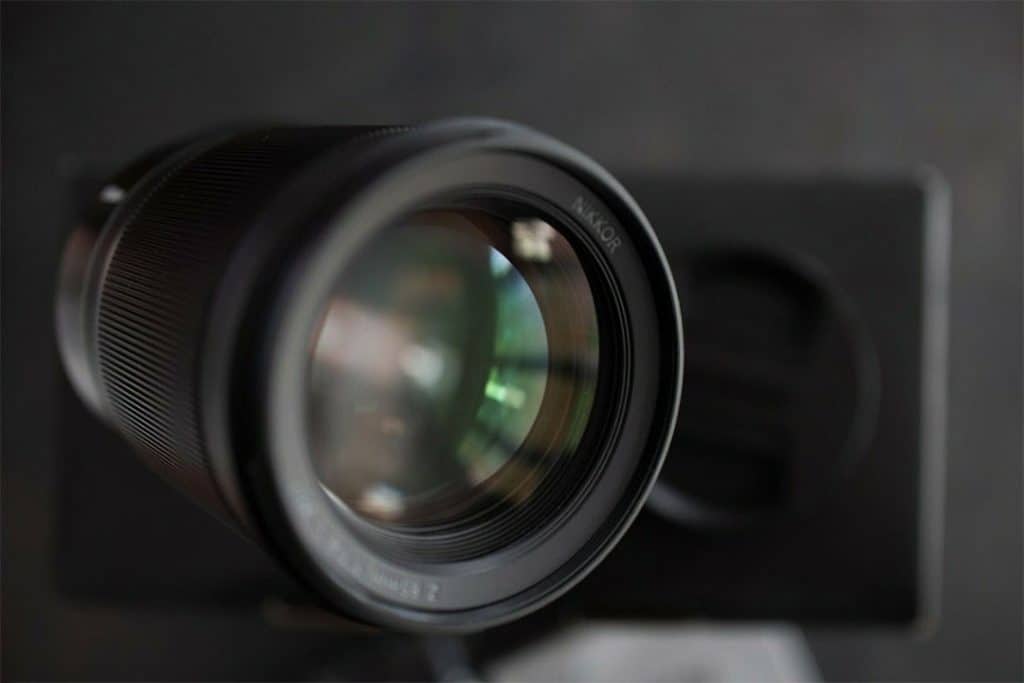
As if that weren’t enough, the 85mm f/1.8 S is actually pretty small given the quality of build and all the features it offers.
Although it might be a bit front-heavy if used on the Z50.
In any case, Z50 users looking for a portrait lens would likely do better with some of the other options we look at here (such as the 50mm f/1.8, below).
Sure, some may complain that the 85mm S “only” goes to f/1.8, and not f/1.4 as with Nikon’s F-mount 85mm G lens.
But really, there’s a point beyond which an excessively wide aperture basically becomes unusable in all but the rarest of portrait shooting situations (for more on this argument see below).
Yes, in low light a wider aperture will permit you to capture some shots you might otherwise have missed. But if the price you pay is that 99% of the image area is totally blurred, it might not be worth the bother anyway.
In any case, for those who like nothing in the photo to be sharp beyond the subjects’ cornea, Nikon’s 58mm Noct lens (see below) has you more than covered.
Instead, what you get with the 85mm f/1.8 S is a highly usable lens that delivers on every front and produces fantastic looking images. What more could any portrait photographer ask for?
As with its longer sibling, the 85mm S (above), Nikon’s Z 50mm f/1.8 S is a sturdily-built, super sharp, almost entirely aberration-free, and state-of-the-art piece of glass.
The main reason this lens doesn’t make the top spot on our list is simply because most photographers will consider a focal length of 85mm to be more appropriate for shooting portraits than a 50mm.
Pros
- Super sharp
- Almost no color fringing
- Well built
Cons
- Very expensive as far as 50mm primes go.
- Average bokeh
- Big
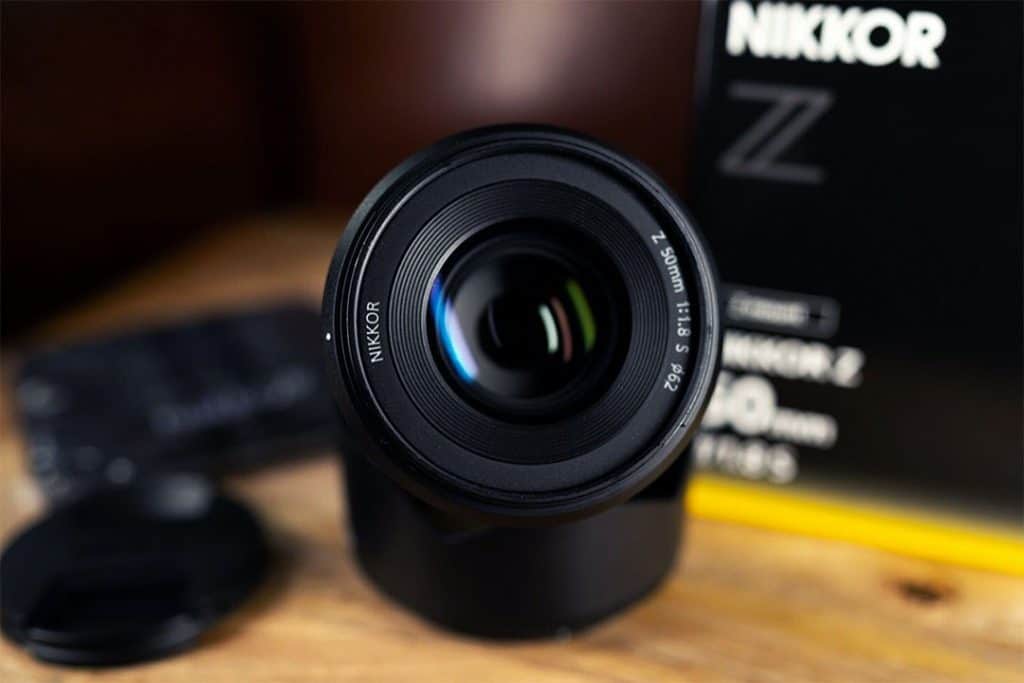
If you’re looking for a lens for environmental portraits, however, and therefore require a wider angle of view, you can probably make this lens your first choice.
Same goes for Z50 users looking for a superbly sharp short telephoto portrait lens, where the 50mm will give you a very pleasing full-frame equivalent of 75mm.
As with the 85mm S, this lens is chock full of extra groups, elements, and fancy optical coatings.
However, while this makes for much improved sharpness and optical performance when compared with your average 50mm prime, for some reason it hasn’t resulted in the world’s most impressive bokeh.
True, bokeh is always a somewhat subjective matter, and while out of focus rendering here is perfectly good, it’s unlikely to set too many pixel peepers salivating. Still, anyone who is more interested in actual photography (as opposed to geeking-out on camera equipment) will likely be perfectly happy with the lens’s performance in this department.
As they undoubtedly will be with 50mm S on all other fronts too.
Well-built, weather sealed, and featuring nicely responsive, tactile controls, the Samyang/Rokinon 85mm lens feels like a product worth twice the price.
But then again, the manufacturers no doubt made some savings elsewhere, as from the point of view of electronics, this is a very simple bit of technology: focus is entirely manual.
Pros
- Fast maximum aperture
- Very reasonably priced
- Weather sealed
Cons
- Manual operation only
- Wont work with in-body stabilization
Aperture cannot be controlled from the camera; and the in-body stabilization of Nikon’s Z-series cameras is disabled when the Samyang/Rokinon is in use.
None of these compromises need be a problem at all for slow and deliberate portrait photographers, but may be enough to persuade those more interested in grabbing candid moments on the fly that they should look elsewhere.
Nonetheless, the lens is good and sharp, produces lovely smooth bokeh, and very little in the way of color fringing.
All in all then, the Samyang/Rokinon 85mm f/1.4 is capable of producing optically excellent results.
Meaning that it makes a great lens for (careful, patient) portrait shooters on a budget.
Nikon’s recently released 58mm f/0.95 S lens comes in a custom Pelican case that makes it look like something you might expect a hitman to bring on a job.
And hopefully you’re commanding the fees of a high-level sicario too, because this thing comes with a bigger price on its head than a DEA snitch.
If you’re an observant reader, though, you’ll already know why; offering as it does a maximum aperture of f/0.95.
Making it the fastest Nikon lens in existence!
Pros
- Nikon’s fastest lens ever
- Incredible image quality
- Stunning bokeh
Cons
- Eye-wateringly expensive
- Manual focus only
- Big and heavy
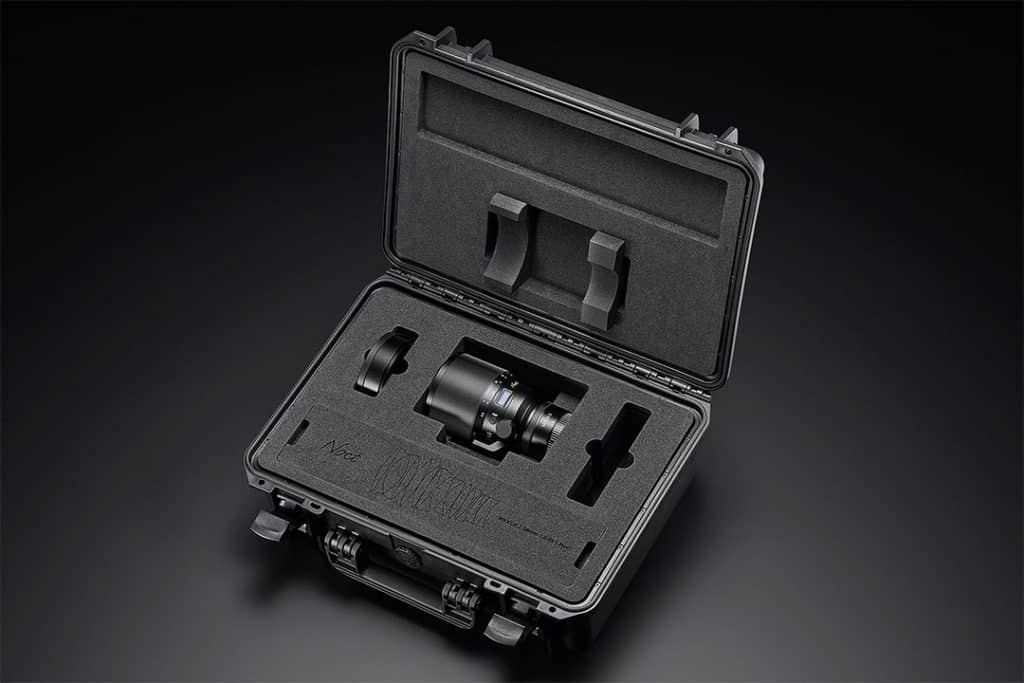
In order to achieve such a feat, Nikon has packed an awful lot of the very finest optics into the lens’s metal barrel.
While this makes the 58mm absolutely huge – and predictably heavy – the result is a lens that produces incredibly sharp images even when used wide open.
Which is just as well really, as it certainly wouldn’t make a lot of sense to purchase such an incredibly fast (and expensive) lens, and then spend most of your time shooting with it at f/8.
For those who get off on out of focus titillation, bokeh is very attractive. And if you want separation from the background, you’ve got it by the truckload.
However, bear in mind that with such a wafer-thin depth of field, you should probably expect to end up with a high ratio of duds; even if your manual-focus skills are precise, the slightest change in posture could be enough to alter the distance between you and the subject, shifting focus from the eyes towards the nose or ears.
Thankfully, though, as this is a Mirrorless camera, focus peaking comes to the rescue here to some degree.
While it’s pretty clear that this is not intended as a lens for the average casual portrait shooter, it’s not entirely obvious exactly who Nikon does have in mind as the target customer.
Most photographers would undoubtedly enjoy shooting with the 58mm f/0.95, but quite how many would be willing to put down so much money for the privilege of doing so is another matter entirely.
Certainly the only people who could justify such an investment would be highly-paid professional photographers.
But the reality is that most highly-paid professional photographers have achieved that position precisely because they are more interested in photography than in gear (a somewhat controversial assertion, but there’s a lot of truth to it).
Which largely leaves Nikon preaching to a niche market of superannuated enthusiasts with a bokeh fetish.
Which isn’t to say that this isn’t a great lens – on the contrary, it’s undeniably superb – but the reality is that for most portrait shooters, professional or otherwise, f/0.95 is simply overkill. Especially at this price.
But sure, if you want the look it produces, and have the cash to match, then go for it; the 58mm f/0.95 is an almost flawless piece of optical engineering.
While there are plenty of comparable lenses available for Nikon’s DSLR system – and these can of course be used on Nikon’s Mirrorless line with the addition of an adapter – this is the first pro-level 24-70mm zoom that is native to the Z-mount system.
To be sure, the 24-70mm f/4 (below) is also also a great lens, but with its slower maximum aperture it can’t really claim to be a professional workhorse.
Pros
- Fast maximum aperture for a zoom
- Good bokeh
- Very sharp at image center
- Weather sealed
- Customizable controls
Cons
- Pricey
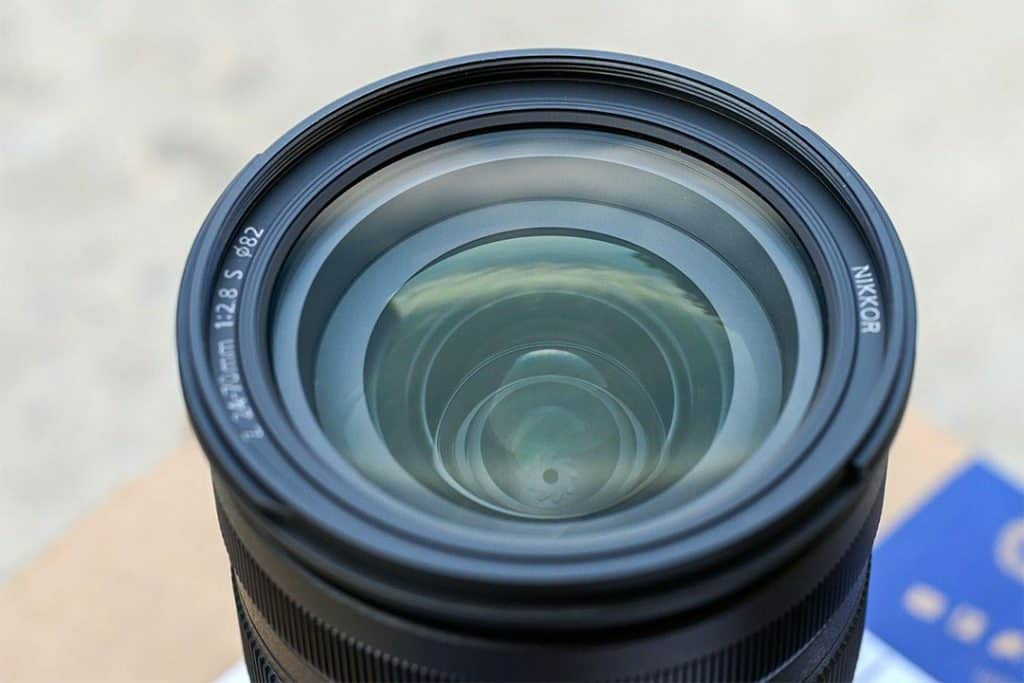
This is particularly the case when it comes to portrait photography, where shooters will definitely appreciate both the extra low-light capabilities and the possibility of achieving a much shallower depth of field offered by this lens .
The lens performs excellently in low light, and displays great center sharpness; with a totally acceptable degree of fall-off toward the edges.
Bokeh is genuinely very pleasing, and noticeably better than with the f/4 version.
Chromatic aberration is minimal.
As with some other Z-series lenses, the barrel features an OLED display that can be customized to show a wide variety of user information. Physical controls include a manual focus ring, a zoom ring, and a third customizable ring that can be used either for selecting aperture or controlling exposure compensation.
All in all then, this is a very thoughtfully designed lens that is a pleasure to use and also performs excellently from an optical point of view.
Nonetheless, in achieving this, Nikon has unsurprisingly had to make a couple of compromises.
For a start, this thing costs approximately twice the price of the f/4 version.
It’s also very marginally heavier. Despite this, though, the f/2.8 S is relatively lightweight and compact, and feels very well-balanced on the Z-series bodies.
However, as far as portrait photographer’s are concerned, it’s worth remembering that a lens of this focal range will only really become useful towards the longer zoom settings.
Meaning that it’s a tool most suited to portrait photographers who also occasionally shoot other genres in addition to portraiture.
These issues aside, the Nikkor 24-70mm f/2.8 S is likely the best 24-70mm zoom that Nikon has ever produced. So if it meets your requirements, you shouldn’t hesitate to make the investment.
Nikon’s “standard” zoom for the Z6 and Z7 Mirrorless cameras, the 24-70mm f/4 S exhibits great central sharpness with a little softness towards the edges that is actually not unattractive for portraiture.
Meanwhile chromatic aberration is barely noticeable. Nonetheless the f/4 version is somewhat outdone optically by the f/2.8 model (above).
Particularly at the edge of frame.
But not so much to be a major concern; after all, this is already a very good lens.
Pros
- Sharp
- Weather sealed
- Smaller and lighter than the f/2.8 version
Cons
- Slow maximum aperture
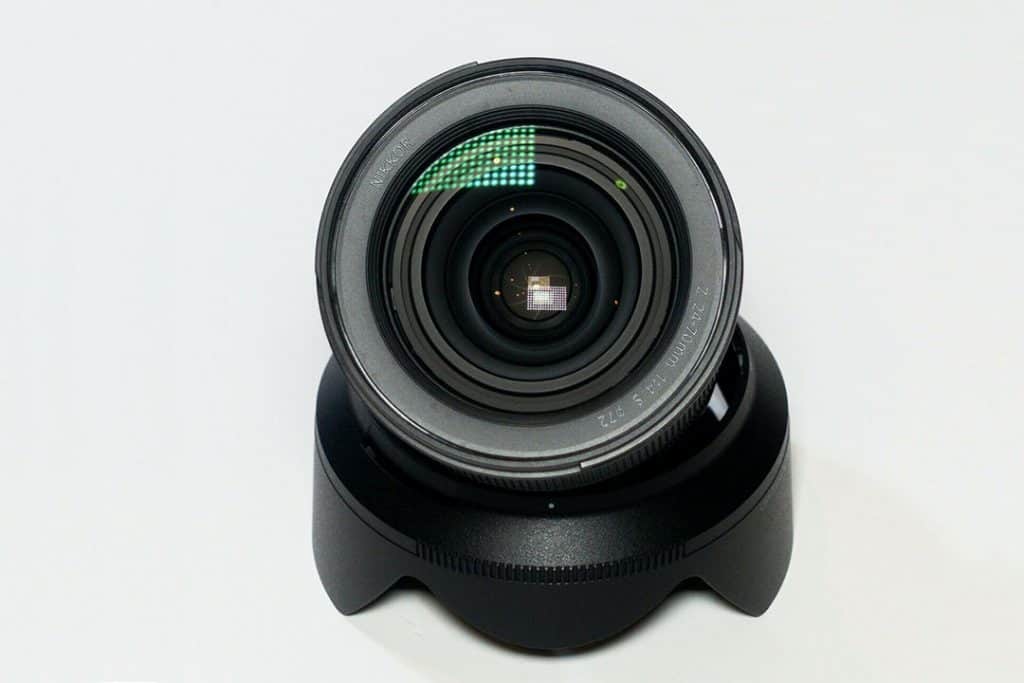
Really then, the main reason to go with the more expensive f/2.8 lens over this one would simply be the extra stop of light it provides.
But whether that particular luxury is one that’s worth paying out four times the price for is a question only you will know the answer to.
The forthcoming Nikkor 70-200mm f/2.8 VR S promises to be a truly great lens for portrait photography: pair it with a nifty fifty for wider environmental portraits, and you’re covered for all the main portraiture focal lengths.
As with some of Nikon’s other Z-mount lens, this model comes with 2 programmable function buttons and a custom function ring that can be assigned to control either aperture or exposure compensation.
Pros
- Highly impressive image stabilization.
- Very short closest-focusing distance
- Weather sealed
Cons
- Big and heavy
- Expensive
Meanwhile the addition of VR (Vibration Reduction; Nikon’s name for image stabilization) will be very much welcomed by those who enjoy shooting in low light.
And in fact the lens is rated for 5½ stops of improvement in this department, which if true makes this the best functioning VR offered by any of Nikon’s lenses.
The Nikkor Z DX 50-250mm f/4.5-6.3 VR is a versatile telephoto zoom lens for Nikon’s only cropped-sensor Z-series Mirrorless camera, the Z50.
Equivalent to a 75-375mm focal length on full frame, it covers all the main focal distances you need for portraiture, and then some.
The lens is sharp, compact, and affordable, making it an attractive choice for portrait photographers on a budget; particularly those who use strobes or who do not need to achieve much separation between subject and background.
Pros
- Good image stabilization
- Sharp
- Small and lightweight
Cons
- Very slow, non-constant, maximum aperture
- Plastic build and lens mount
However, a very slow maximum aperture combined with the cropped sensor format dictate that you will struggle to achieve a very shallow depth of field with this lens at wider zooms settings; meaning that it won’t correspond to everyone’s idea of a great portrait lens.
So unless for some reason you especially want a Z50-specific lens, you would do better going with something like the 24-70mm F72.8 (above), which not only provides a much faster maximum aperture but also covers all the main portrait focal lengths (50-100mm) when used on a cropped frame camera.
A Guide to Choosing the Right Nikon Z Series Lens for Portraiture
Maximum Aperture
As far as portrait photographers are concerned, one of the cruelest tricks of nature is that often the nicest looking light is also the weakest light (think the exquisite pale softness of the “blue hour”).
This means that in order to take advantage of some of the best lighting conditions for portraiture, you will do well to invest in lenses with a fairly fast maximum aperture.
Similarly, portraiture is about people.
In fact usually just one person.
This means that as a portrait photographer you will often want to put all emphasis on your main subject.
One way of achieving this is to create a shallow depth of field by using a wider aperture setting.
While of course other factors beyond aperture help to determine depth of field, the fact is that the wider the maximum aperture available to you, the shallower the depth of field you will be able to achieve.
Shooting at f/5.6 on a telephoto lens will provide a fairly shallow depth of field, but the same aperture on a 50mm lens will leave a lot of recognizable (and therefore potentially distracting) information in the background.
Again then, a faster maximum aperture can be very useful for portraiture.
It’s important not to go overboard with this mantra though.
There’s usefully fast maximum aperture, and then there’s ridiculously fast maximum aperture.
Before spending thousands of dollars on Nikon’s incredible 58mm f/0.95 S Noct lens (above), ask yourself whether it would really be worth investing all this money when in most cases the end result is likely to be photos with such a shallow depth of field that literally nothing but the person’s eyeballs are in focus.
That may look fine on your smartphone, but an image so devoid of sharp detail may not hold anyone’s attention for long when viewed much bigger than this.
True, standing a little further back for a full length portrait could produce good results, with both the foreground and background fully blown out.
But once again, there’s a limit to how much people want to look at little more than a few abstract swirls of color.
Of course, viewers of portraiture don’t expect the same degree of detail as with, say, a landscape photo.
Nonetheless, there does need to be somewhere sharp for them to alight their gaze; a few islands of terra firma in an otherwise swirling sea of buttery bokeh.
The eyes may be “windows of the soul,” but if all a portrait shows in any clarity is a pair of eyes, the image is unlikely to keep an audience captivated for any amount of time.
In short, fast glass certainly has its advantages for portraiture, but there comes a point at which being able to shoot at a wider aperture may be of little practical use.
Precisely which point that is for you will depend on your own personal tastes, but for most people it’s likely to be around f/2 – give or take a stop.
Bokeh
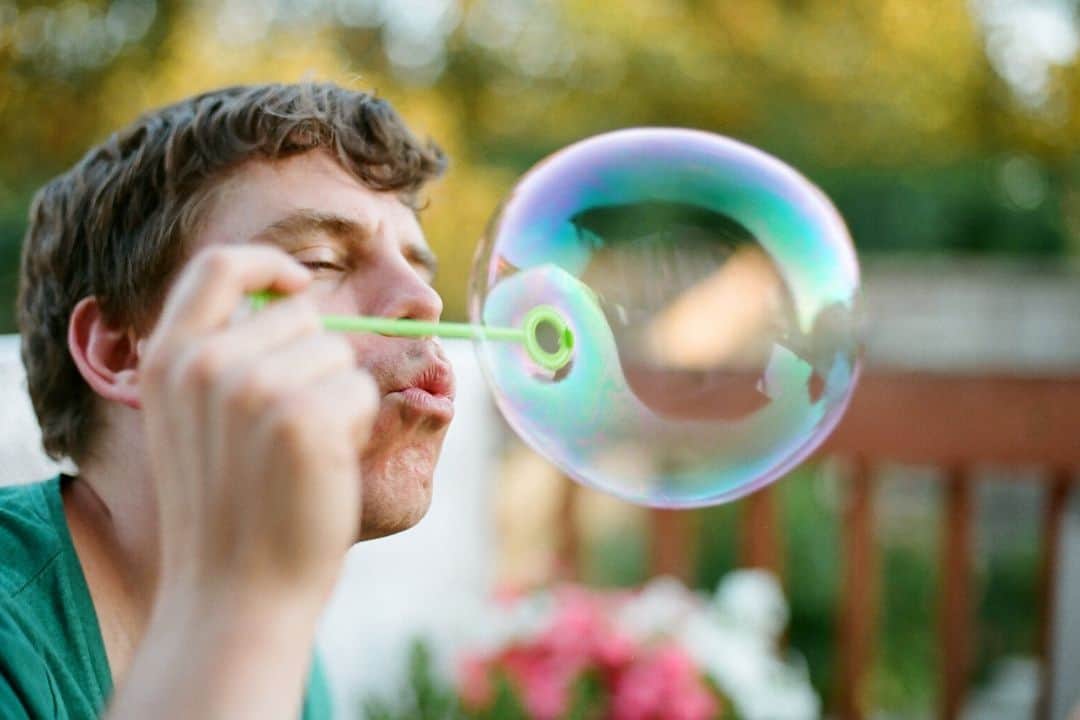
Bokeh refers to the way in which a lens renders the out of focus areas of a photograph. Some lenses will reduce backgrounds to a smooth and highly attractive swirl; while others will capture out of focus details in a much busier and more distracting manner.
As we’ve just noted, portraits are often shot at wide aperture settings of f/2.8 and beyond.
But even shooting shutdown to f/4, vast portions of the photo will probably be out of focus.
And with such large swathes of a portrait likely to be blurred, clearly it’s important that these areas look good.
For this reason, lenses that produce attractive bokeh are usually highly valued for portraiture.
The technical considerations that contribute to attractive bokeh are numerous.
However, merely studying the specifications of a particular lens will give you little insight into the kind of bokeh it’s capable of producing.
In any case, bokeh is a somewhat subjective concept, and what pleases one viewer may irritate another. That being the case, the only test that matters is your eyes; either you like the results or you don’t. The important thing is not to get too hung up about bokeh. “Bad” bokeh can certainly be distracting and detract from an otherwise good photo, but even the world’s most beautiful bokeh will not make a boring photo interesting.
Focusing
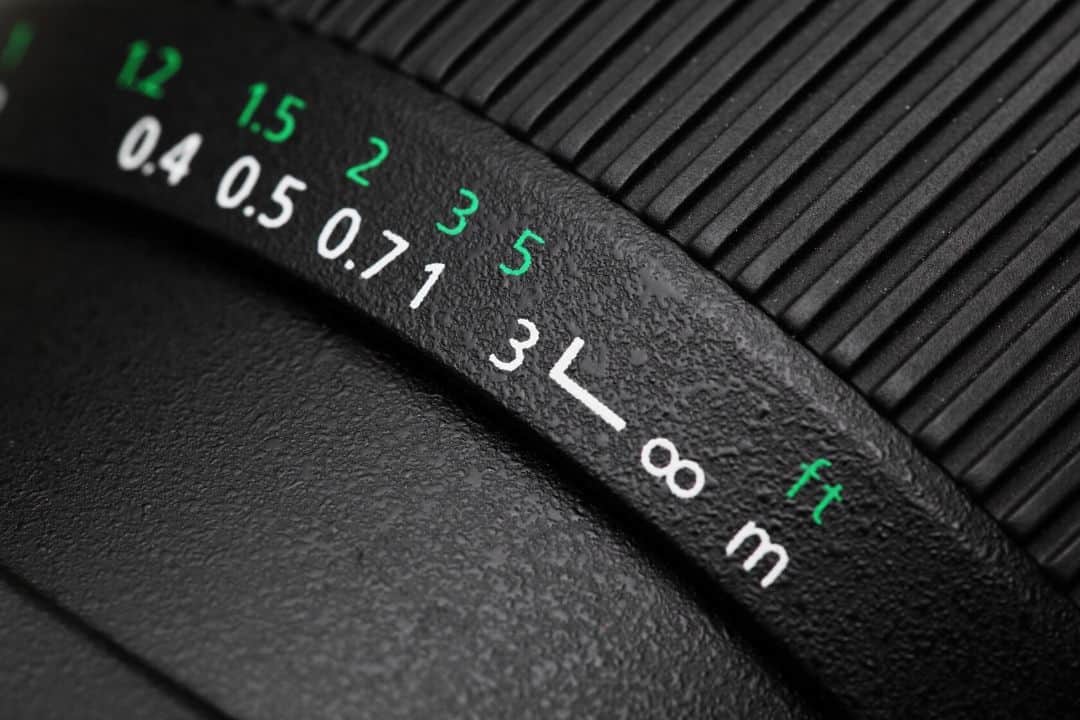
A couple of the portrait lenses for Nikon Z-series cameras that we look at here lack autofocus.
If this were not a guide to portrait lenses, but one about, say, lenses for sports or documentary photography, a lack of AF capabilities would be enough to disqualify these particular models from our list.
But there are various ways of approaching portrait photography – some fast some slow – and not everybody prefers autofocus to manual control.
For photographers who work quietly, purposefully, and intensely, manual focus might be the best solution. If that’s you, be sure to try out the lens before purchasing.
Manual operation can vary massively between lenses, with some offering nicely grippy focus rings with very responsive, smooth action, and others tending to lag or provide too much resistance.
Normally you would also do well to check if the lens in question offers genuine manual focusing or instead “focus-by-wire” operation; as many find the latter system to be less reactive.
As it is though, the Z-mount lenses that use the focus-by-wire system actually perform exceptionally well in this area, and for portrait photography at least, they are unlikely to cause any inconvenience.
Meanwhile, photographers looking to create somewhat more animated and candid portraits will likely consider autofocus essential.
In this case, face- or eye-recognition AF is a must.
Those who also plan on shooting video will need the focus motors to be silent, and basically everyone will want AF operation to be fast and accurate.
Thankfully, Nikkor Z lenses tend to excel in this department.
Sharpness

There’s certainly something to be said for a super crisp and detailed portrait that makes the subject appear almost larger than life.
Clearly then, center sharpness will be of importance to most portrait photographers.
However, unless you’re in the somewhat unusual habit of placing your subjects right at the edge of the frame, corner sharpness is much less critical in portrait photography than with other genres such as landscapes, interiors, or product photography.
In any case, it’s important not to go overboard about the minutiae of lens optics and other technical details.
In all likelihood these will be noticed only by the photographer who took the shot, and certain pixel-peepers of a borderline neurotic disposition. To be clear, an overly-soft lens should be avoided. But in an area of photography that is primarily about creating an expressive image that captures the sitter’s personality, a lens that picks up every pore and skin blemish in astonishing detail should probably not be too high on anybody’s list of priorities. Indeed, it can even be a distraction.
Look at it this way; nobody has ever won (or indeed lost) a portrait photography award due to the optics of their lens. An otherwise great portrait that is somewhat less than perfect optically is still a great portrait.
Meanwhile a boring or badly realized portrait that is absolutely pin sharp is still a bad portrait.
Great if you can combine both fantastic content and exemplary optics, but if the absolute top-of-the-range lens is out of your budget, don’t for a minute think that this will stop you from producing stunning portrait photos.
In short, avoid any lens that performs exceptionally badly on this front (though realistically there are very few modern lenses that do), but don’t assume that a sharper photo is necessarily a better photo.
Rather, a sharper photo is just a sharper photo; one which may be either good or bad, independently of its sharpness.
Focal Length
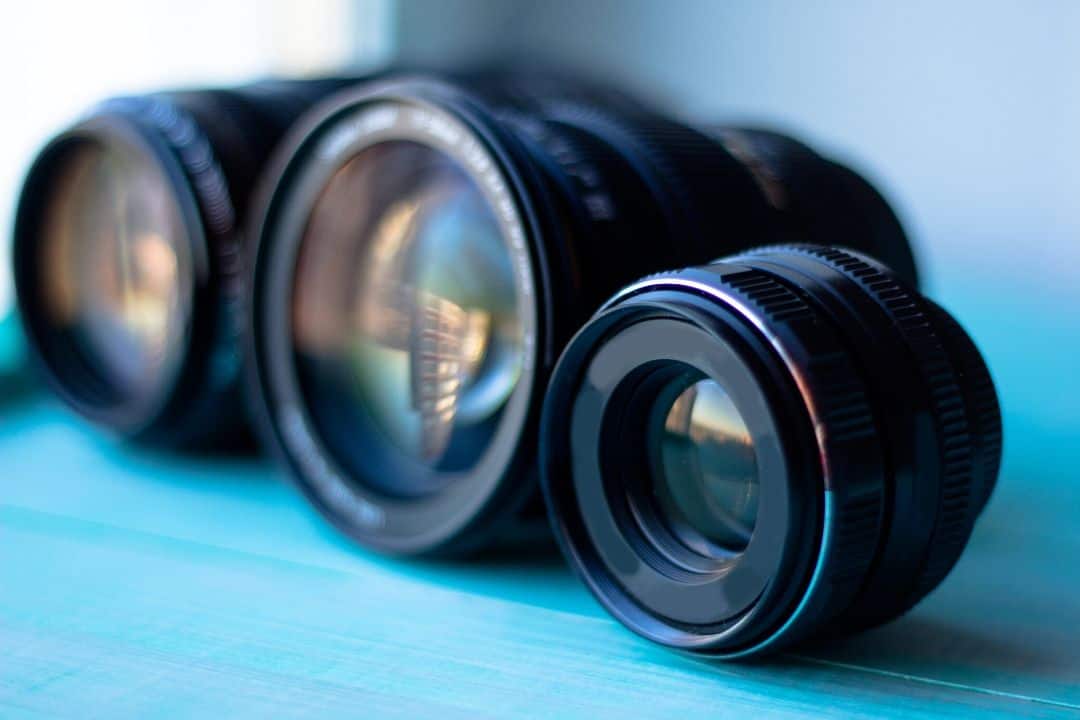
While it’s certainly true that a portrait could be taken on any focal length of lens you want, there’s good reason why wide-angle lenses are generally not recommended for the task.
With its exaggerated perspective, you might think that the portrait you just shot on a 20mm lens looks cool; but as nobody wants to see themself with a gigantic nose, bulging eyes, or a disproportionately large forehead, your subject is unlikely to agree with you.
In contrast, a longer focal length lens will have the effect of flattening perspective, resulting in a more flattering likeness of your subject.
For environmental portraits – i.e. portraits that show the subject in the context of their surroundings – a 50mm lens will usually be just wide enough.
Although you may be able to get away with going as wide as 35mm, just as long as you don’t stand too close to the subject (the Pinocchio effect again).
However, aside from the fact that you’d still not be photographing the sitter in the most flattering manner, it will also be quite difficult to get much separation between subject and background at either of these focal lengths.
So unless you especially want to show the background in some detail, a longer lens will likely provide better results.
Often you’ll see a particular lens referred to as being “a portrait lens.” Although the term is a little vague (as we said, in practice you could shoot a portrait with any lens), a lens will usually be referred to in this way if it fulfills three essential criteria. Of these, fast maximum aperture and bokeh we’ve already looked at above, meanwhile the third criterion is typically that the lens in question has a focal length of between 80 and 105mm. The reason for this is that lenses within this range will:
● Provide sufficient magnification to fill the frame with only the sitter’s head and shoulders.
● Throw the background out of focus at most apertures, creating good separation.
● Produce a pleasing perspective that is flattering for the subject.
However, while most – if not all – portrait photographers will likely want to own a lens within this focal range, it’s worth keeping in mind that they are not appropriate for every conceivable portrait photography scenario.
For example, if all portraits were shot purely as head-and-shoulder studies, portraiture would be a particularly formulaic and uninteresting genre of photography.
Meanwhile, if it’s important to you that the viewer understands something of the location – when shooting someone in their workplace, for example – then a lens that reduces everything in the background to an unrecognizable blur would not be an appropriate tool for that particular job.
What’s more, if we specifically look at headshot portraits, then a slightly longer focal length of say 110 to 180mm could also be a good option.
This will permit even greater separation of the subject from the background, making the image about the person’s face and nothing else. Just bear in mind that the longer the focal length, the further away you’ll need to stand in order to get the subject’s entire head in the frame, and therefore the more difficult it will be to establish any kind of rapport with them.
Primes vs Zooms
It’s always been the rule that prime lenses tend to be sharper than zooms.
While that still holds true today, it’s worth keeping in mind that most modern lenses – of any kind – perform extremely well optically.
True, if a prime and zoom from the same manufacturer are considered side-by-side, there may well be some difference in sharpness; with the prime almost certainly being the sharper of the two. But as mentioned above, sharpness isn’t the be-all and end-all of portrait photography.
In any case, all other things being equal, the differences between a prime and a zoom are unlikely to be so great as to cause any major problems in practice.
You should by all means keep sharpness in mind when choosing a lens. But if you really would find a zoom more convenient than a prime (and assuming that the zoom performs at least reasonably well in this department), don’t get overly hung-up on optics. In a way, a lens should be evaluated on its merits independently of other products.
So when considering purchasing a specific lens, ask yourself whether the lens in question delivers images of a quality that would satisfy you. If the answer is yes, then don’t worry about how much sharper other options may (or may not) be in comparison.
Putting aside the issue of lens sharpness though, what will likely be an issue for those weighing up the merits of primes vs zooms is the ratio between maximum aperture and retail price.
And regardless of whether we’re talking about primes or zooms, faster lenses invariably cost more than slow ones. At the same time though, primes tend to be faster than zooms by default. You can certainly purchase fairly fast zooms, but they will almost always cost more than a comparable prime lens with the same maximum aperture. And when it comes to really wide apertures, such as f/2 and beyond, you’ll struggle to find many zoom lenses that offer such specs.
To summarize, then, if you’ve got plenty of money to spend, and don’t need anything faster than, say, f/2.8, there are certainly some very good zooms available for the Nikon Z series of cameras. On a more restricted budget?
Or require even greater speed? A prime will be the way to go.
Final Thoughts
Choosing between the various Nikon Z lenses that are appropriate for portrait photography is simultaneously both easy and difficult.
Easy in the sense that the Z-mount line-up is still rather limited, so there simply aren’t that many lenses to choose from when compared with the vast range available for the brand’s DSRLs. But hard in that all of the Z-mount lenses that Nikon has released to date are fantastic photographic tools that are likely to satisfy even the most technically demanding of portrait photographers.
In short, you can’t really go wrong with any of them, which can make it tricky to narrow your selection down.
In practice, choosing the right Z-mount lens for portraiture simply means understanding your own needs as a photographer and selecting the lens which most closely meets your requirements.
Which Z-mount lens(es) would you choose for shooting portraits, and why?
I’d love to hear your arguments both for and against the different Nikkor S models in the comments section below.


